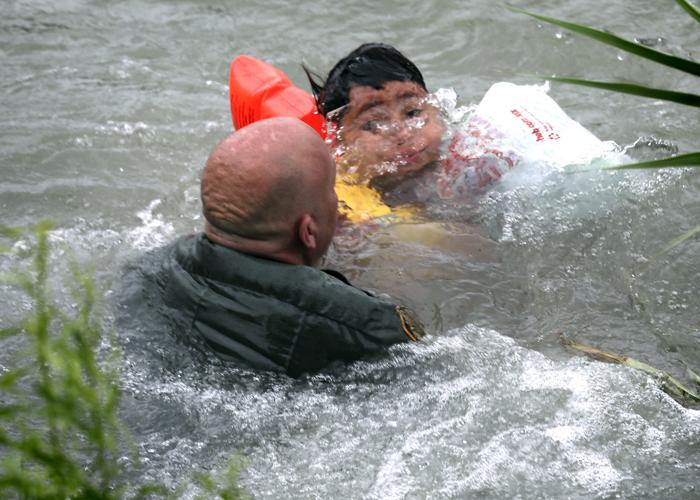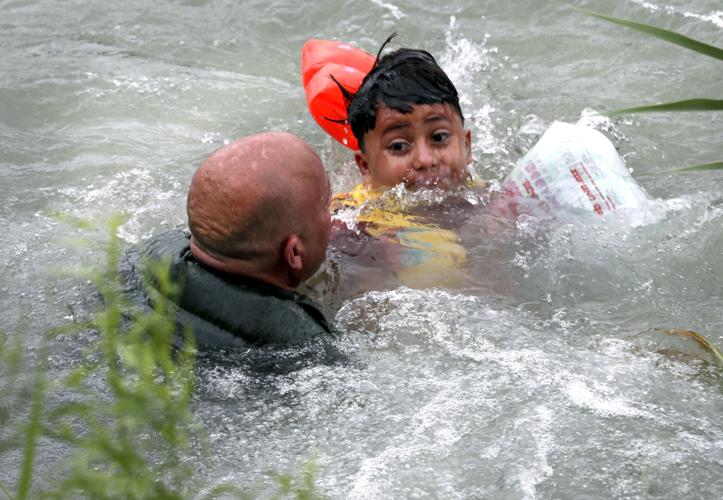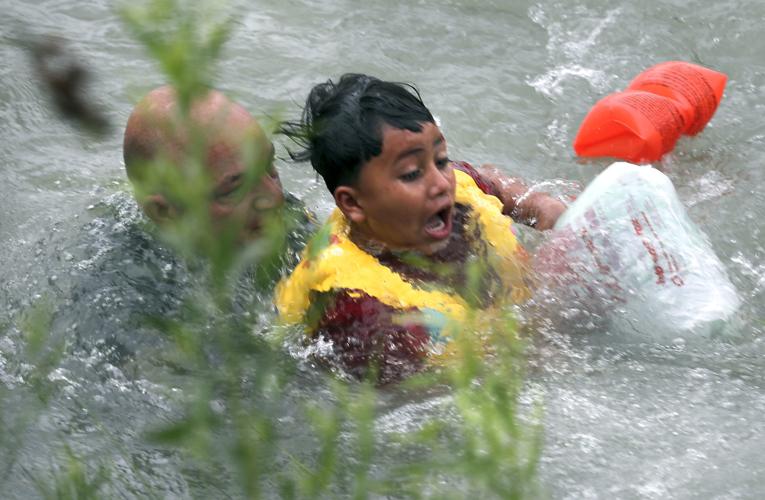It was shocking to read the texts Border Patrol agent Matthew Bowen sent around the time in December 2017 he struck a Guatemalan with a Ford truck.
He called some migrants “subhuman,” joked about frying Guatemalans in oil and made a reference to “f---ing beaners.” This was angry, racist stuff. But more disturbing was how his lawyer, Sean Chapman, categorized the texts.
Bowen’s legal argument, Chapman said, would be that “the use of these terms is commonplace throughout the Border Patrol’s Tucson Sector, that it is part of the agency’s culture, and therefore says nothing about Mr. Bowen’s mindset.”
Chapman declined to explain that inflammatory footnote last week, when my colleague Curt Prendergast asked him about it. The Star’s subsequent story ran Sunday and caught fire across the country. On Tuesday, Chapman told me his wording was “inartful,” and that he was strictly referring to the word “tonks,” used frequently in Bowen’s texts, not the other slurs, as common in the patrol.
But his footnote unleashed new concerns about the Border Patrol in a time of hype and crisis surrounding immigration issues. Is the agency culture really one of frustration and racial rage, as portrayed in Bowen’s texts, or is it the one that came through in amazing photos from Texas last week?
A San Antonio Express-News reporter and photographer were on a ride-along with Border Patrol agents near Eagle Pass, Texas, when a group of Central Americans tried to cross the rain-swollen Rio Grande using inflatable kiddie pools as rafts. One of them capsized, a 7-year-old boy started to go under, and an agent jumped into deep, swirling water to rescue the boy. The newspaper photographer captured dramatic moments.
People who know the Border Patrol well acknowledge that both characteristics of the agency are real. Agents commonly act as humanitarians, rescuing lost migrants from deserts or rivers, buying migrants food or bringing it from their own homes, supplying diapers in moments of need. These are not rare occurrences, and the agency has worked to ensure we know it by putting out videos and press releases of dramatic rescues.
But there is also systemic cruelty that sometimes characterizes the agency, as it did last year when agents played a role in the separation of migrant children from their parents, as part of the Trump administration’s “zero tolerance” policy.
And there is a subculture within the patrol, as in many law enforcement agencies, of frustrated authoritarianism. Consider the shocking twist that many of the texts obtained through a search warrant were between Bowen and Lonnie Swartz, the agent then awaiting trial for second-degree murder in the cross-border shooting of a 16-year-old in Nogales, Sonora. Swartz was later acquitted.
In a text by Swartz to Bowen, Swartz muses about how it would be to leave the patrol, saying he “would miss certain things too. Runnin down s---bags who thought they had you fooled.”
And consider that prosecutors say there were five complaints against Bowen for using unnecessary force between 2012 and 2015. Nothing got him in much trouble until the 2017 incident that occurred near the Mariposa Port of Entry and in clear view of the cameras. It makes you wonder what happens off camera that is never reported.
But there are other things that happen off-camera. An entire unit, called BORSTAR, has been dedicated to searches and rescues since desert deaths became more common in the late 1990s, as border policies pushed crossings into the hinterlands. And there are individual acts of unrecognized humanitarianism, as Art Del Cueto, vice president of the National Border Patrol Council, noted when I asked him about the agency’s culture Tuesday.
“The good things that agents do are not publicized like the bad things agents do,” Del Cueto said. “I still see agents who bring extra food from home.”
The food goes to migrants they pick up who are hungry.
“There’s a lot of guys and women out there who do good things on a day-to-day basis. It just doesn’t get publicized.”
Del Cueto, who still works about a shift a week as a patrol agent in addition to his union duties, told me he will sometimes buy food at a drive-thru if he has apprehended people who are hungry. He wasn’t bragging, just pointing out that pitching in like that is not an uncommon part of the work. In fact, it is part of the agency’s culture.
On the other hand, Del Cueto is also the man who became the target of students’ ire at the University of Arizona this spring. After a protester disrupted a presentation by two agents on campus, Del Cueto told a radio host that if a protester had approached him and shouted at him up close the way she did to these agents, and if he were off-duty, “I would have punched her in the throat.”
This isn’t on-duty brutality, but it shows how even an individual can embody that contrast within the agency culture. There’s the humanitarian urge to help, and there’s the angry urge to lash out. The same guy who will buy food for the hungry might also take an ill-advised swing. We all have these competing impulses.
So we shouldn’t read Bowen’s texts as characterizing the agency’s culture, in my view. But they should serve as a warning of the latent tendencies among some agents, a subculture within the broader agency that needs to be kept in check, especially these days.







